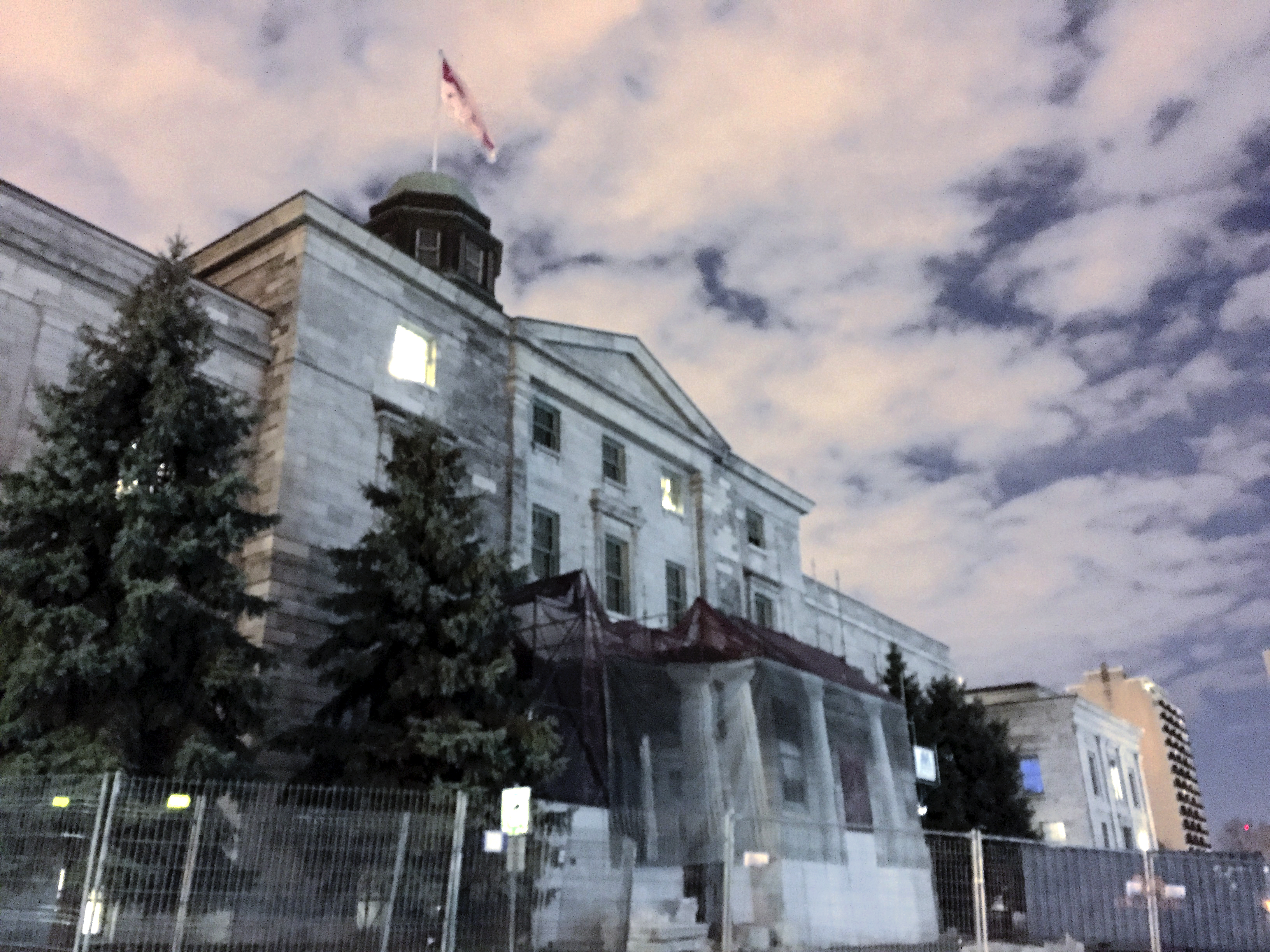Major renovations on the McGall Arts building have been halted once again, as the Landmark Upholding, Maintenance, and Preservation Society (LUMPS) declared the scaffolding a historic landmark, and thus legally protected from being moved or altered in any way. The Arts building, so named for prominent benefactor Sir Arthur Arts, has already had its renovation, a “portico stabilization project,” delayed several times.
The temporary support structure includes plywood and metal pipe scaffolding, as well as a collection of plastic weatherproof tarps imprinted to seamlessly mimic the majestic stone face of the historic building. The support structure was originally intended merely to shield the Arts building physically and cosmetically during repairs. However, it has become an enduring symbol, more familiar to McGall students than the underlying edifice itself.
“I love that place,” said Jen Eric, a U1 Experimental Philosophy and Undeclared double major. “I think my morning class is in that building, but I’m not sure, because I haven’t gone yet. Someone told me that there’s another building behind it, but no way, right?”
Other students outright prefer the structure to the Arts building. “Most of the windows on campus just reflect the cold, depressing landscape outside,” said U2 Comedy student me, the writer of this column, “but the windows on the Renovation Project Tarp always reflect spring. I think it’s an artistic commentary on how we look at the passage of time, or something.”
“The tarp and scaffolding are significantly older than the building they’re attached to, and may even predate the city itself.”
The landmark status has been conferred despite the true age of the structure remaining unknown, its construction predating even the earliest of historical records. “We’re not quite sure how, but city records and the university’s own architectural archives indicate that the tarp and scaffolding are significantly older than the building they’re attached to, and may even predate the city itself,” said Derrick Garrison, a professor in the Department of Crumbling Infrastructure Planning.
Indeed, the oldest woodcuts from Mount Royal and the surrounding countryside, which are housed in the special collections of the Sadpath Library, have been deciphered as reading “main entryway closed – please use temporary entrance through the D’aw Son building (to be constructed in 400 years).”
To McGall preservationists and architecture buffs, what is an inconvenience to others is really a victory. “McGall has a ton of great old buildings, but almost none of them have the legal recognition they deserve,” said Archie Trave, a PhD student at the School of Building-building who is currently working on a revolutionary gas station design. “The Arts building scaffolding is by far the best example, and I’m glad it will now stand proudly for the foreseeable future.”
According to Trave, this victory is especially redeeming as it comes after a long streak of failures to obtain landmark status for other structures, McGall having had a falling-out with LUMPS a few years ago. “For a really long time, we couldn’t get anything preserved. Heck, we accidentally demolished a lot of buildings,” they said. “The problem really started when we applied to have the Peacock building registered as a protected historic building; the application was denied because the review board could not determine whether or not it was a building at all.”
